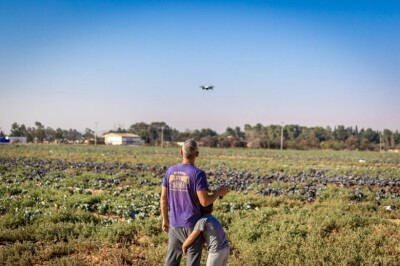To say that safety is a top consideration for anyone and everyone in the commercial drone space is an understatement. Since drone operators are responsible for any safety hazard their drone creates, the FAA has maintained its focus on drone safety being the law. This reality has compelled organizations to both recognize and mitigate the risk that is inherent anytime they take a drone into the sky.
However, this understanding of mitigation and risk when it comes to drone safety is often positioned in terms of a given operation not resulting in a crash. Safety Management Systems (SMS) that are designed to address the safety of a given operation rather than define a safety culture underscore the gap between how safety is considered at the operator and organization level. This gap is something the team at Baldwin Safety & Compliance is looking to highlight in a big way at the Commercial UAV Expo.
“Getting to know the UAS world a lot better over the last couple of years, we’ve heard talk around safety being focused on the protection of the device or the reliability of the equipment on board or operational safety considerations to ensure that someone doesn’t make any incursions into restricted airspace,” said Jason Starke, Director of Standards for Baldwin Aviation. “Our approach to safety management is at a higher level that is designed to bring it more to the organization which directly impacts operators and operations.”
The concept of “safety” is often treated as a checkbox at an organizational level, while operators can sometimes fall into the trap of focusing on outcomes rather than the underlying processes, latent conditions, and hazards that have the potential to define the inherent safety of a given drone flight. That’s not how the FAA views considerations with defining an SMS though, and a more prescriptive approach to managing safety risk is something that operators and organizations will soon need to consider.
“A big part of our organization is about understanding and mitigating the risk ahead of time, and that’s the crux of our safety management systems,” Starke told Commercial UAV News. “On the pragmatic side though, for Part 135 operators, the implementation of a safety management system is likely going to be required as soon as next year. A lot of the bigger companies that are going after their Part 135 certificates are using our program on account of how it meets regulatory requirements they’re likely going to have to contend with very soon.”
The value inherent in getting ahead of an FAA certification process is easy enough to understand but the positive impact that a SMS can have on everything from insurance to defining operational safety goals across an entire organization is also considerable. This impact is driven by an approach to safety that measures performance at the organizational level, which isn’t just a question of process or technology, but of people and culture.
“Flights are becoming more and more autonomous but human beings are still involved as operators and within the organization to make decisions,” said Starke. “No matter how autonomous you make something, with people involved there’s the potential for a bad decision. So how do we get ahead of that? It’s one of the interesting aspects of safety management because the idea is to find that human element in order to then have a discussion about how stakeholders can have confidence in UAS operations.”
These are the sorts of conversations that Starke and his team will be having at the Commercial UAV Expo, where the team will highlight how an organization can show, through the data, that it can help stakeholders and operators identify issues before they manifest into safety events. What does it mean to choose the right metrics to identify precursors to an event? Can your SMS support a wide range of operations? Does a given SMS have the ability to scale quickly? These are the sorts of questions that the team will be exploring and answering in booth 229 at the Commercial UV Expo.
Safety will always be top of mind for drone operators and organizations that are using the technology, but approaching the topic more in terms of systems and behavior has tremendous benefits by defining frameworks of drone safety performance. What those benefits are, and how they can be enabled, will always vary, making safety conversations that explore the creation and installation of these frameworks all the more important to have.
“That’s why we go to these shows is to have these conversations,” Starke said. “Considering the complex questions of how to measure safety performance is more about a process than it is a specific solution. If you have questions or want to learn more or even get started, we can talk.”
You can more fully explore how Baldwin Safety & Compliance crafts scalable and intuitive safety programs and training products designed to improve safety systems and cultures at the Commercial UAV Expo. Click here to learn more.















Comments